Sand Tufas
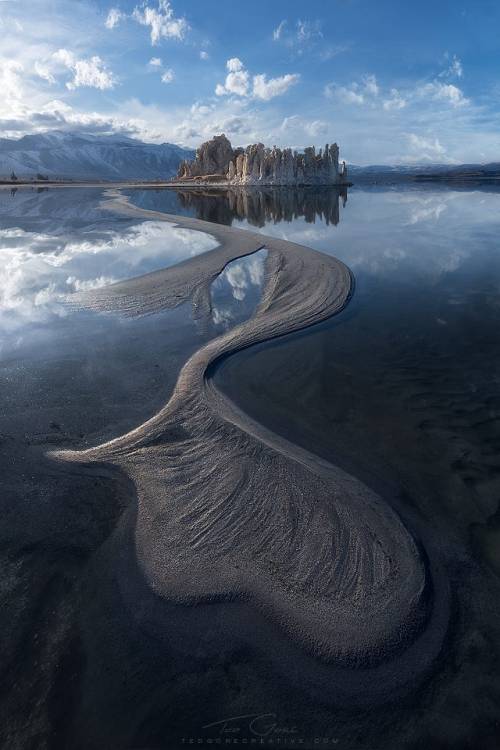
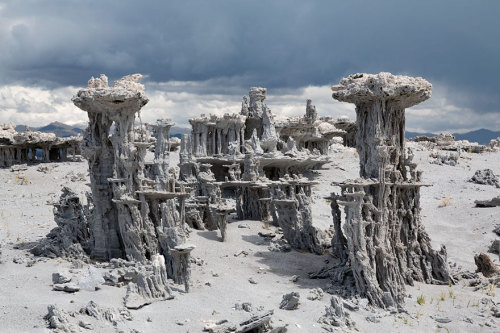
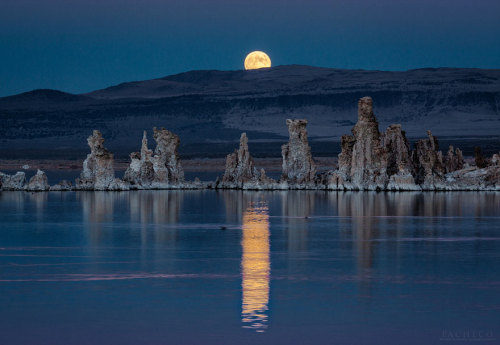


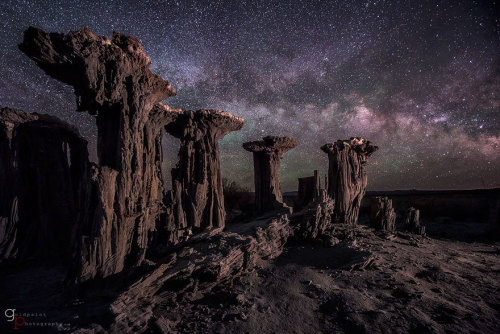
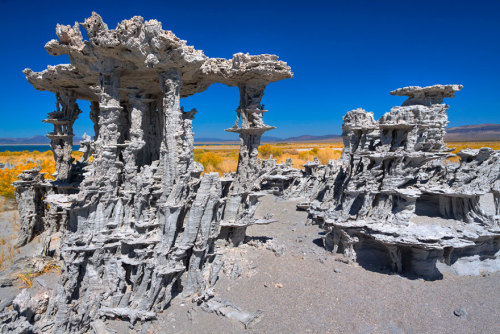
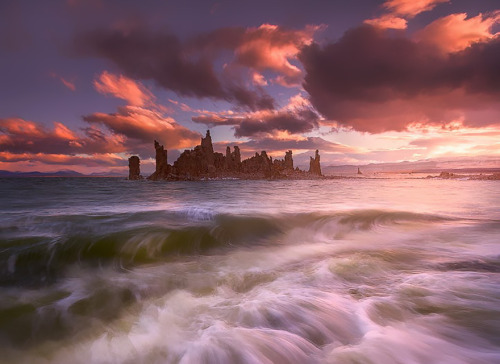
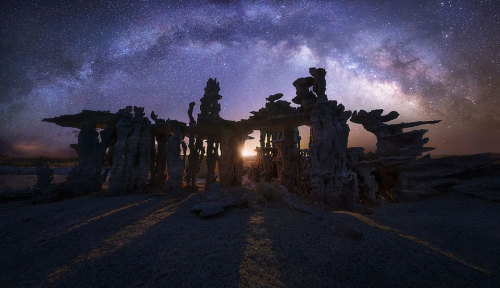
Sand Tufas
You could be forgiven for thinking that the otherworldly rock formations in these pictures come from another planet, or from a sci-fi movie perhaps. But they’re actually called sand tufas and they come from right here on earth.
A tufa is a peculiar form of calcium carbonate, and they’re created when calcium-bearing freshwater springs well up through alkaline lake water (which is rich in carbonates). The carbonate and calcium combine and, over centuries, these elements form unusual spires, towering columns, and strange cauliflower-shaped mounds which can reach heights of up to nine metres (30ft). Tufas can only form underwater, and they’re only exposed when lakes are drained or dry out over many years. Check out this collection of pictures compiled by Bored Panda to see these curious formations for yourself.
Via + image credits
More Posts from Allisoncheri and Others




Dallas Stars @ Vancouver Canucks || 16 March 2017
Bo Horvat, incoming.

Dallas Stars @ Vancouver Canucks || 16 March 2017
Tyler Seguin nearly loses his head during warm-up.






Mt. St. Helens
I’ll have limited copies of this in print at VanCAF17 this weekend, come see me at table D-11!

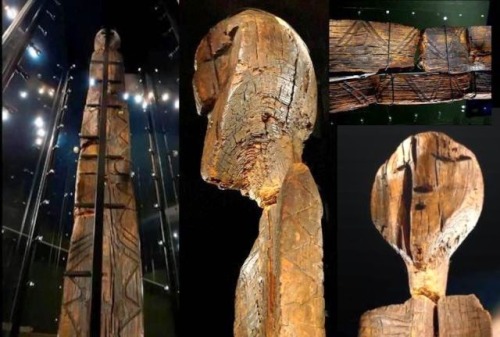
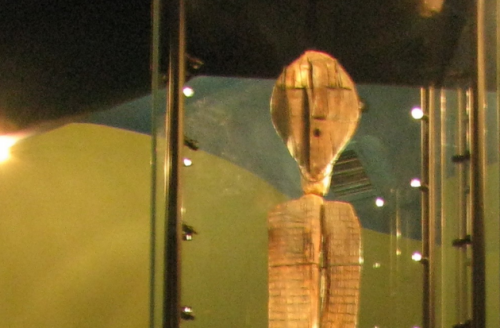
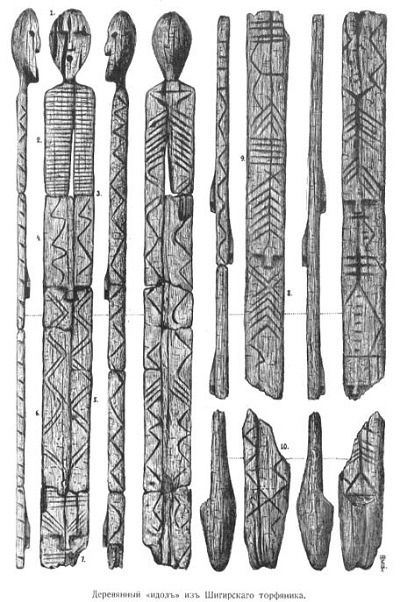
This is know as the Shigir Idol
“A mysterious wooden idol found in a Russian peat bog has been dated to 11,000 years ago - and contains a code no one can decipher.
The Shigir Idol is twice as old as the Pyramids and Stonehenge - and is by far the oldest wooden structure in the world. Even more mysteriously, it is covered in what experts describe as ‘encrypted code’ - a message from a lost civilisation. Professor Mikhail Zhilin of the Russian Academy of Sciences’ Institute of Archeology said: ‘The ornament is covered with nothing but encrypted information. People were passing on knowledge with the help of the Idol.’ Russian experts think that the strange carvings may contain a belief system, the equivalent of the Bible’s Genesis. The statue had been dated as being 9,500 years old, after its discovery in a peat bog 125 years ago. But new research in Mannheim, Germany used Accelerated Mass Spectrometry n small fragments of the sculpture, and found it is at least 11,000 years old. That means the sculpture dates from the very beginning of the Holocene epoch - the era when man rose to dominate the world.’
Source: https://uk.news.yahoo.com/mysterious-russian-statue-is-11-000-years-old—twice-as-old-as-the-pyramids-170632897.html#4zrWvRH
Celebrating 17 Years of NASA’s ‘Little Earth Satellite That Could’
The satellite was little— the size of a small refrigerator; it was only supposed to last one year and constructed and operated on a shoestring budget — yet it persisted.
After 17 years of operation, more than 1,500 research papers generated and 180,000 images captured, one of NASA’s pathfinder Earth satellites for testing new satellite technologies and concepts comes to an end on March 30, 2017. The Earth Observing-1 (EO-1) satellite will be powered off on that date but will not enter Earth’s atmosphere until 2056.
“The Earth Observing-1 satellite is like The Little Engine That Could,” said Betsy Middleton, project scientist for the satellite at NASA’s Goddard Space Flight Center in Greenbelt, Maryland.
To celebrate the mission, we’re highlighting some of EO-1’s notable contributions to scientific research, spaceflight advancements and society.
Scientists Learn More About Earth in Fine Detail

This animation shifts between an image showing flooding that occurred at the Arkansas and Mississippi rivers on January 12, 2016, captured by ALI and the rivers at normal levels on February 14, 2015 taken by the Operational Land Imager on Landsat 8. Credit: NASA’s Earth Observatory
EO-1 carried the Advanced Land Imager that improved observations of forest cover, crops, coastal waters and small particles in the air known as aerosols. These improvements allowed researchers to identify smaller features on a local scale such as floods and landslides, which were especially useful for disaster support.

On the night of Sept. 6, 2014, EO-1’s Hyperion observed the ongoing eruption at Holuhraun, Iceland as shown in the above image. Partially covered by clouds, this scene shows the extent of the lava flows that had been erupting.
EO-1’s other key instrument Hyperion provided an even greater level of detail in measuring the chemical constituents of Earth’s surface— akin to going from a black and white television of the 1940s to the high-definition color televisions of today. Hyperion’s level of sophistication doesn’t just show that plants are present, but can actually differentiate between corn, sorghum and many other species and ecosystems. Scientists and forest managers used these data, for instance, to explore remote terrain or to take stock of smoke and other chemical constituents during volcanic eruptions, and how they change through time.
Crowdsourced Satellite Images of Disasters

EO-1 was one of the first satellites to capture the scene after the World Trade Center attacks (pictured above) and the flooding in New Orleans after Hurricane Katrina. EO-1 also observed the toxic sludge in western Hungary in October 2010 and a large methane leak in southern California in October 2015. All of these scenes, which EO-1 provided quick, high-quality satellite imagery of the event, were covered in major news outlets. All of these scenes were also captured because of user requests. EO-1 had the capability of being user-driven, meaning the public could submit a request to the team for where they wanted the satellite to gather data along its fixed orbits.

This image shows toxic sludge (red-orange streak) running west from an aluminum oxide plant in western Hungary after a wall broke allowing the sludge to spill from the factory on October 4, 2010. This image was taken by EO-1’s Advanced Land Imager on October 9, 2010. Credit: NASA’s Earth Observatory
Artificial Intelligence Enables More Efficient Satellite Collaboration

This image of volcanic activity on Antarctica’s Mount Erebus on May 7, 2004 was taken by EO-1’s Advanced Land Imager after sensing thermal emissions from the volcano. The satellite gave itself new orders to take another image several hours later. Credit: Earth Observatory
EO-1 was among the first satellites to be programmed with a form of artificial intelligence software, allowing the satellite to make decisions based on the data it collects. For instance, if a scientist commanded EO-1 to take a picture of an erupting volcano, the software could decide to automatically take a follow-up image the next time it passed overhead. The Autonomous Sciencecraft Experiment software was developed by NASA’s Jet Propulsion Laboratory in Pasadena, California, and was uploaded to EO-1 three years after it launched.

This image of Nassau Bahamas was taken by EO-1’s Advanced Land Imager on Oct 8, 2016, shortly after Hurricane Matthew hit. European, Japanese, Canadian, and Italian Space Agency members of the international coalition Committee on Earth Observation Satellites used their respective satellites to take images over the Caribbean islands and the U.S. Southeast coastline during Hurricane Matthew. Images were used to make flood maps in response to requests from disaster management agencies in Haiti, Dominican Republic, St. Martin, Bahamas, and the U.S. Federal Emergency Management Agency.
The artificial intelligence software also allows a group of satellites and ground sensors to communicate and coordinate with one another with no manual prompting. Called a “sensor web”, if a satellite viewed an interesting scene, it could alert other satellites on the network to collect data during their passes over the same area. Together, they more quickly observe and downlink data from the scene than waiting for human orders. NASA’s SensorWeb software reduces the wait time for data from weeks to days or hours, which is especially helpful for emergency responders.
Laying the Foundation for ‘Formation Flying’

This animation shows the Rodeo-Chediski fire on July 7, 2002, that were taken one minute apart by Landsat 7 (burned areas in red) and EO-1 (burned areas in purple). This precision formation flying allowed EO-1 to directly compare the data and performance from its land imager and the Landsat 7 ETM+. EO-1’s most important technology goal was to test ALI for future Landsat satellites, which was accomplished on Landsat 8. Credit: NASA’s Goddard Space Flight Center
EO-1 was a pioneer in precision “formation flying” that kept it orbiting Earth exactly one minute behind the Landsat 7 satellite, already in orbit. Before EO-1, no satellite had flown that close to another satellite in the same orbit. EO-1 used formation flying to do a side-by-side comparison of its onboard ALI with Landsat 7’s operational imager to compare the products from the two imagers. Today, many satellites that measure different characteristics of Earth, including the five satellites in NASA’s A Train, are positioned within seconds to minutes of one another to make observations on the surface near-simultaneously.
For more information on EO-1’s major accomplishments, visit: https://www.nasa.gov/feature/goddard/2017/celebrating-17-years-of-nasa-s-little-earth-satellite-that-could
Make sure to follow us on Tumblr for your regular dose of space: http://nasa.tumblr.com/.
-
 z-bot reblogged this · 4 weeks ago
z-bot reblogged this · 4 weeks ago -
 iamkeepingthis reblogged this · 7 months ago
iamkeepingthis reblogged this · 7 months ago -
 toreadeventuallly reblogged this · 7 months ago
toreadeventuallly reblogged this · 7 months ago -
 djjdpeculiar81 liked this · 10 months ago
djjdpeculiar81 liked this · 10 months ago -
 adventuresadrenaline reblogged this · 1 year ago
adventuresadrenaline reblogged this · 1 year ago -
 shippostinginabottle reblogged this · 1 year ago
shippostinginabottle reblogged this · 1 year ago -
 phatburd reblogged this · 1 year ago
phatburd reblogged this · 1 year ago -
 racklestackles reblogged this · 1 year ago
racklestackles reblogged this · 1 year ago -
 justremainingmyself reblogged this · 1 year ago
justremainingmyself reblogged this · 1 year ago -
 justremainingmyself liked this · 1 year ago
justremainingmyself liked this · 1 year ago -
 wiinterquay liked this · 1 year ago
wiinterquay liked this · 1 year ago -
 frogshunnedshadows liked this · 1 year ago
frogshunnedshadows liked this · 1 year ago -
 catherea reblogged this · 1 year ago
catherea reblogged this · 1 year ago -
 enntzim reblogged this · 1 year ago
enntzim reblogged this · 1 year ago -
 emratabte liked this · 1 year ago
emratabte liked this · 1 year ago -
 ikeepexceedingmydailypostlimitwh reblogged this · 1 year ago
ikeepexceedingmydailypostlimitwh reblogged this · 1 year ago -
 deliciousdietdrpepper liked this · 1 year ago
deliciousdietdrpepper liked this · 1 year ago -
 ladyurticariathinblood reblogged this · 1 year ago
ladyurticariathinblood reblogged this · 1 year ago -
 worldweaverofmediocrity liked this · 1 year ago
worldweaverofmediocrity liked this · 1 year ago -
 eclectichellmouth reblogged this · 1 year ago
eclectichellmouth reblogged this · 1 year ago -
 mona-vainy liked this · 2 years ago
mona-vainy liked this · 2 years ago -
 mona-vainy reblogged this · 2 years ago
mona-vainy reblogged this · 2 years ago -
 fastofthekillones liked this · 2 years ago
fastofthekillones liked this · 2 years ago -
 d0lanz liked this · 2 years ago
d0lanz liked this · 2 years ago -
 skysides reblogged this · 2 years ago
skysides reblogged this · 2 years ago -
 darnitjack liked this · 2 years ago
darnitjack liked this · 2 years ago -
 watchitburnnnn liked this · 2 years ago
watchitburnnnn liked this · 2 years ago -
 napisbae reblogged this · 2 years ago
napisbae reblogged this · 2 years ago -
 napisbae liked this · 2 years ago
napisbae liked this · 2 years ago -
 mah-qamar reblogged this · 2 years ago
mah-qamar reblogged this · 2 years ago -
 theotterblog reblogged this · 2 years ago
theotterblog reblogged this · 2 years ago -
 tojigasm liked this · 2 years ago
tojigasm liked this · 2 years ago


























